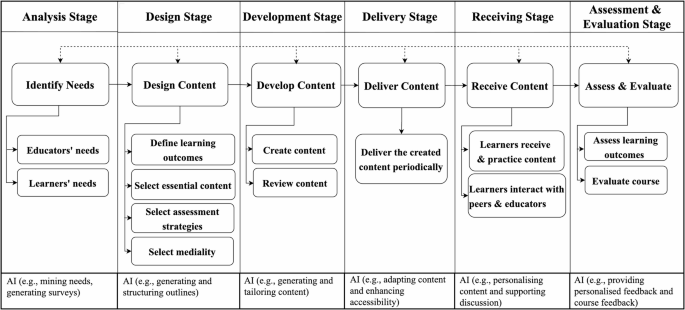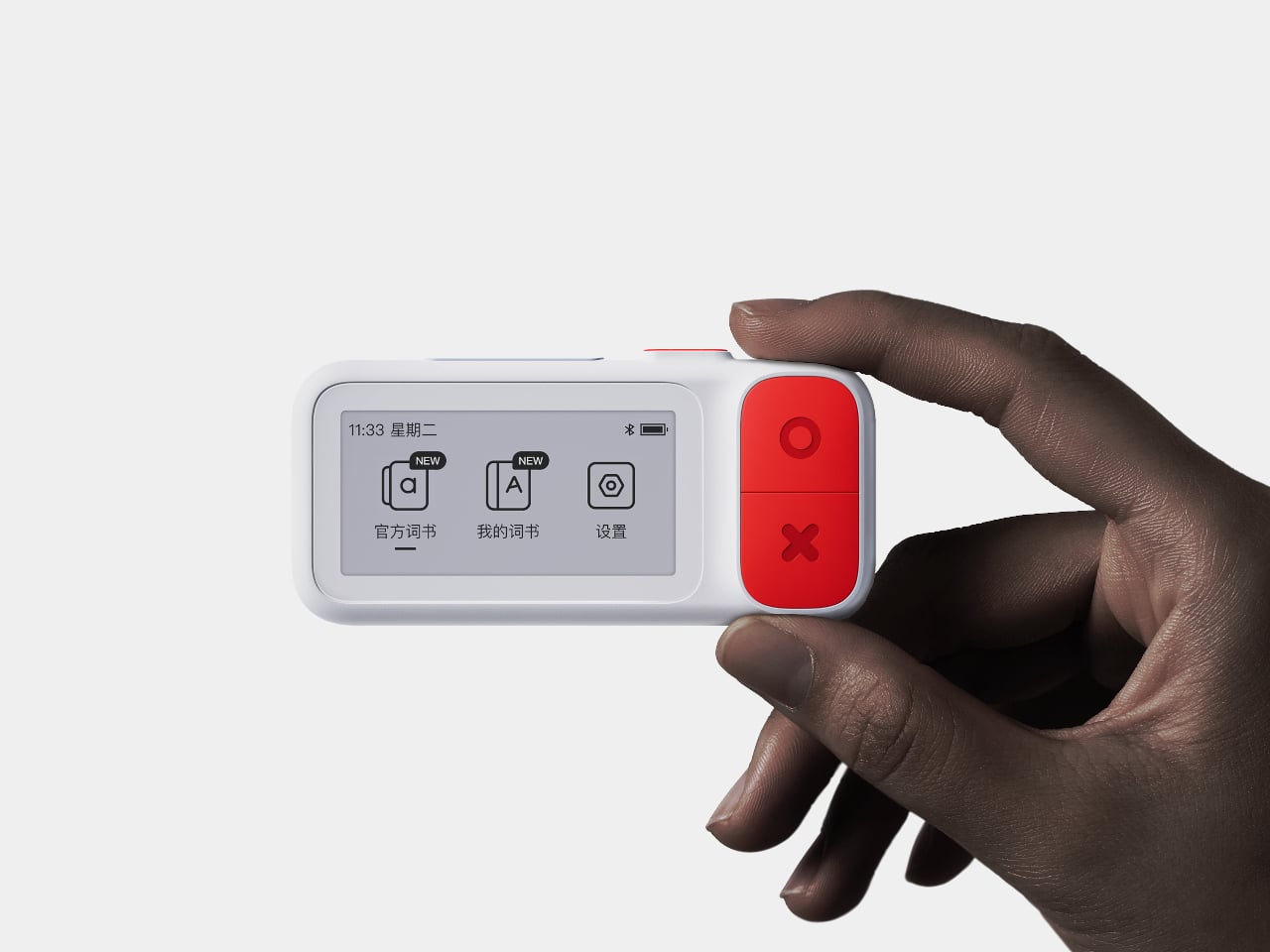The MIND model a microlearning AI-integrated instructional design for enhanced learning outcomes

Microlearning
Prior studies have examined various aspects of microlearning, including user perceptions, instructional effectiveness, and design strategies. For example, Iqbal et al.16 explored postgraduate residents’ perceptions of microlearning environments, reporting overall satisfaction, with higher satisfaction among female residents, participants aged 25–30, and those in internal medicine. Similarly, Choo and Rahim17 demonstrated that microlearning can achieve outcomes comparable to face-to-face active learning in pharmacy education, while also offering flexibility, cost-effectiveness, and suitability for distance learning. This study examines key factors, including gender, age, locality, and employment status, in AI-enhanced microlearning, with the goal of determining whether they influence learning outcomes.
Other studies have focused on instructional design and efficacy. For example, Lee et al.14 evaluated a mobile microlearning course in journalism education, showing increased knowledge, decision-making confidence, and skill performance. The study highlighted areas for improvement, such as automated feedback, gamified exercises, and interactive content. Likewise, Dolowitz et al.18 found that mobile microlearning applications, such as NeNA, can enhance employee performance when iterative user feedback is incorporated. Moreover, Sankaranarayanan and Mithun19 examined AI-enabled microlearning in a database programming course, finding that students valued immediate feedback and simplified concepts but faced challenges with inconsistent or inaccurate responses for complex tasks. AI is essential, transforming how individuals learn, work, and interact20,21. Despite these advancements, designing effective microlearning experiences remains challenging12. Therefore, integrating AI in instructional design is critical for addressing the challenges and enhancing instructional effectiveness, particularly in diverse learner contexts.
AI in instructional design
The integration of AI into instructional design is essential for effective instruction. It can be used to enhance the analysis of different learning needs, content design, and development. Traditional instructional designs often assume homogeneity, neglecting differences in prior knowledge, pace, or motivation. AI, such as GenAI, can be used to tailor microlearning content and feedback to individual learners, resulting in improved engagement and performance. It can help in generating content and selecting assessment strategies aligned with established taxonomies such as Bloom’s taxonomy22,23. This, while maintaining close human oversight, streamlines the design process and saves time. It supports resource scalability by producing diverse instructional materials in various media formats, including audio, video, and presentations. Evidence from multiple studies highlights these benefits. For instance, Kohnke et al.24 demonstrated that GenAI-focused microlearning modules enabled pre-service teachers to increase their confidence in lesson planning and the ability to adapt AI tools for differentiated instruction, formative assessment, and culturally responsive teaching. Similarly, Willenborg and Withorn25 demonstrated that a six-lesson microcourse on GenAI in college classrooms enabled students to efficiently apply AI in research and writing while accommodating instructors’ time constraints.
Moreover, Baillifard et al.26 illustrated that with a personal AI tutor for psychology students by modelling each student’s understanding of key neuroscience concepts and generating adaptive retrieval practice; students achieved up to 15 percentile points higher than peers without AI support. In a meta-analysis, Sun and Zhou27 found that GenAI interventions significantly improved college students’ academic achievement, with medium effect sizes, particularly when AI-supported tasks involved independent learning, text-based content, or smaller cohorts. Practical applications illustrate the importance of thoughtful instructional design when integrating AI. Ahlgren et al.28 demonstrated that AI effectiveness depends on structured guidance, tailored tasks, and contextualised application principles directly transferable to instructional design in education.
GenAI can enhance microlearning design by enabling the creation of concise content in the form of videos, podcasts, and images—allowing learners to engage more deeply with material; however, challenges remain, including platform compatibility issues, fragmented learning for complex topics, and reduced social interaction, which necessitate careful educator strategies and human facilitation to maintain collaborative and social aspects of learning29. There is limited work on developing an instructional design framework that provides educators with detailed guidance for the practical development of microlearning instruction, particularly when integrating AI to enhance learning outcomes. Therefore, this study supports interactive microlearning instructional design responsive to diverse learners’ needs.
Microlearning instructional design
As education continues to evolve, novel instructional design models are essential for effective instructional design. Traditional instructional design models are increasingly proving ineffective and less adaptable in this rapidly changing world30. Factors such as shortened attention spans, widespread smartphone usage, and easy access to information through search engines have contributed to the diminishing relevance of these models31.
There are models, such as the ADDIE (Analysis, Design, Development, Implementation, and Evaluation) model, and the microlearning model. However, while these models are valuable, they are subject to several limitations. The ADDIE model, a colloquial term for a systematic approach to instructional development, lacks academic rigour and a single author, having evolved informally through oral tradition32. It is further stated that anyone is free to attribute their own interpretations and characteristics to the model as they may want. Traditional models, such as ADDIE, are challenging to apply in dynamic and adaptive educational contexts and are increasingly considered inapplicable in the modern technology-based era33,34. In addition, it is costly and requires adequate funding for implementation33,35. Moreover, it is also criticised for being linear, hierarchical, and time-intensive36. It faces challenges in adapting to rapidly changing educational contexts and integrating emerging technologies. Another model is proposed by Dolasinski and Reynolds31, a learning model that integrates microlearning in four phases: (1) predevelopment of the learning, (2) development and delivery of learning content, (3) learner participation and practice, and demonstration of activity, and (4) evaluation. However, this model also has significant limitations. First, it lacks empirical validation; that is, the model has not been tested for its effectiveness in real-world settings. Without empirical validation, its practical applicability and impact may be uncertain. Second, its generalisability is limited, as the inquiry is based on past research that is limited to workplace learning and theories31. As a result, its applicability to broader educational domains may be limited. Challenges in designing microlearning experience persist, as highlighted by recent studies37,38,39. Therefore, to overcome the existing challenges, this study developed the MIND model to support effective instructional design.
MIND model development
The novel MIND Model is developed to support effective instructional design through the flexible integration of cutting-edge technologies, including but not limited AI, to enhance learning outcomes. The novelty of the Model can be identified across several dimensions. First, it focuses on educators and learners’ needs, explicitly emphasised during the analysis stage. Other needs can be considered depending on the context, such as institutional requirements, technological infrastructure, curriculum standards. Second, the model is based on robust theoretical foundations, particularly the TPACK and the FIL frameworks. TPACK, introduced by Mishra and Koehler40, emphasises the interconnectedness of content knowledge (CK), pedagogical knowledge (PK), and technological knowledge (TK) in teaching. This is particularly important in microlearning, where content must be concise, requiring careful design considerations41. For example, educators need to understand influential factors, including PK and CK, and know what content to modularise, how much to modularise, and how to adjust delivery strategies. The study incorporates Situational Awareness (SA) into the TPACK framework for educators’ side, resulting in a conceptual extension of TPACK as SATPACK. This extension emphasises the importance of being aware of ongoing dynamics within the learning environment. Furthermore, it integrates the FIL framework to guide content design, development, and delivery. FIL framework is developed by Monib et al.41 and emphasise the importance of contextual (media richness), behavioural (interaction and engagement), cognitive (comprehension), and affective (motivation, self-concept, and satisfaction), influencing learning outcomes drawing from multiple theories such as the Expectancy-Disconfirmation, constructivism, Self-determination, Situational Awareness, Cognitive Multimedia Learning, and Andragogy. Together, these frameworks shape a comprehensive, theory-informed foundation for the MIND Model. Third, it is learner-centred, prioritising learners’ needs, enabling them to take responsibility for self-paced learning. Fourth, it uniquely separates the delivery stage (where the educator presents content) and the receiving stage (where learners receive, practice, interact, and engage with content, peers, and educators), emphasizing active learning, unlike ADDIE, which treats instruction as a single, passive implementation stage. This distinction is essential in the current MIND Model, which highly emphasises factors such as interactivity and engagement. The ADDIE model pays limited attention to interaction, such as learner-educator, learner-content, and learner-learner, in content delivery and has been criticised by constructivists. Bates42 states
ADDIE model is what might be called ‘front-end loaded’ in that it focuses heavily on content design and development, but does not pay as much attention to the interaction between instructors and students during course delivery. It has been criticised by constructivists for not paying enough attention to learner-instructor interaction, and for privileging more behaviourist approaches to teaching.
In contrast, MIND model emphasises meaningful interaction with content, educators, and peers, considering TPACK40 and FIL frameworks41. This interaction is critical, as delivery without reception, such as learners merely receiving content without interaction, may not produce meaningful learning outcomes. Fifth, the MIND Model is outcome-oriented, with all stages and sub-elements systematically aligned to achieve specific learning outcomes. The MIND model integrates both assessment, which measures learning outcomes, and evaluation, which evaluates course’s overall effectiveness and quality, including teaching, content, delivery, and learning experience. In the ADDIE model, evaluation tests the curriculum rather than individual learning, reflecting its curriculum-oriented nature. Evaluation does not explicitly measure learning outcomes and operates at the macro level, judging the quality or effectiveness of a programme, course, or curriculum (e.g., a committee reviewing a new curriculum after its first year of implementation, an educator receives feedback on a course at the end of the semester). As Peeters and Schmude43 clarify the difference,
Learning assessments from students are different from programmatic or curricular evaluation. While education disciplines…use assessment to mean assessments of students’ learning, it seems that many in American pharmacy education…use assessment to refer to program evaluation. This misuse of the term assessment for program evaluation seems unfortunate. There are textbooks and internet-based resources on program evaluation.
Their observation underscores the importance of maintaining conceptual clarity between assessment & evaluation to avoid conflating learner-level outcomes with programme-level judgments. This distinction is reinforced in institutional practices. For example, Colorado College differentiates the two in its guidelines, defining assessment as focused on student learning outcomes and evaluation as addressing broader departmental, programmatic, or administrative concerns44. The distinction is also recognised in scholarly publishing. The Springer journal Educational Assessment, Evaluation and Accountability45 differentiates the two, both in its title and its aims and scope, stating:
The main objective of this international journal is to advance knowledge and dissemination of research on and about assessment, evaluation and accountability of all kinds and on various levels as well as in all fields of education.
Sixth, it is cost-effective and time-efficient; unlike other models, which require extensive resources and multiple stakeholder involvement. Seventh, the model is grounded in microlearning principles, with AI integration supporting all stages—from needs analysis to content creation, content delivery, and content receiving, and assessment & evaluation—reducing resource demands while ensuring quality instructional design. Eighth, the MIND model is non-linear, where each stage is interconnected. If there is a need for improvement, educators can address and return to earlier stages. Lastly, it can be adopted across formal, non-formal, and informal learning settings. The model consists of six stages: Analysis stage, design stage, delivery stage, receiving stage, and assessment & evaluation stage. Certain stages of the MIND Model can be adapted to suit different learning settings—formal, non-formal, or informal—where, for example, assessment may remain essential in formal contexts but could be optional or modified in non-formal and informal learning (see Fig. 1).

Analysis stage
The analysis stage involves examining the needs of both educators and learners. For educators, this includes assessing their preparedness to design microlearning experiences and identifying any required professional development. AI can support the identification of educators’ and learners’ needs, while human oversight and interpretation remain crucial. AI supports educators in assessing learners’ needs through multiple strategies, including learner profiling, needs mining, surveys, and diagnostic assessments to uncover knowledge gaps, skills, preferences, and challenges. For example, AI can analyse large volumes of data from students’ interactions, assessments, and learning preferences to determine existing knowledge and knowledge gaps46. Similarly, machine learning algorithms can cluster learners by proficiency or learning style and predict skills or concepts they may struggle with. Moreover, GenAI can assist in creating surveys to identify the needs of educators and/or learners. All identified needs should remain within the course scope and align with institutional policies. The principle of andragogy, which emphasises learners’ ‘need to know,’ should guide educators not only during the need analysis stage—ensuring that they address the why, what, and how questions47. Additionally, individual, situational, and subject differences, as well as other factors, should be considered. Overall, learners’ needs can then be translated into specific learning outcomes in the subsequent stage.
Design stage
The design stage involves designing microlearning content for formal, non-formal, or informal learning, following the analysis stage. Clear, specific, and measurable learning outcomes should be defined in alignment with Bloom’s Taxonomy22,23 or any other taxonomy, ensuring that both cognitive depth and skill application are systematically assessed. These outcomes guide the selection of essential content, ensuring both relevance and clarity. The appropriate assessment strategies should be planned in alignment with the learning outcomes and may include formative and summative assessments. GenAI can aid in the design stage by outlining the module including learning outcomes, selecting instructional content, and assessment & evaluation strategies, and other related elements, while ensuring alignment across all components. These elements can be revisited in subsequent stages as needed for refinement. Aligned with this, the mediality can be selected, including the delivery mode (e.g., online, face-to-face, or blended)48,49, as well as the media formats, such as videos, podcasts, presentation slides, and infographics. In mediality, selecting an appropriate microlearning platform is particularly crucial, as it facilitates effective content design and enables learners to navigate and engage with the modules meaningfully in later stages. In addition, it is crucial to consider other factors—such as time constraints, institutional policies, and factors identified at the analysis stage. Overall, a well-designed module ensures alignment across all components.
Development stage
The development stage involves creating and reviewing microlearning content, following the design stage. Content can be created in different media formats, such as short videos, handouts, or presentation slides, ensuring alignment with the intended learning outcomes and assessment strategies. Educators—having a clear understanding of the content and learning outcomes—can efficiently develop appropriate assessment & evaluation strategies, which can be revisited and refined in later stages if needed. Educators should consider various factors, including but not limited to content-specific factors such as media richness, interactivity, engagement, comprehension, self-concept, motivation, and satisfaction41. Instructional content should include interactive elements, e.g., quizzes and simulations, to foster active learning and provide opportunities for practical application6,50,51. To support diverse learners’ needs, content should be multi-sensory and multi-modal31,52, incorporating rich media such as visuals, graphs, charts, audio, and video to enhance engagement and comprehension. Modules should be presented in bite-sized segments to prevent cognitive overload and support sustained engagement3. The time is relatively short, subjective49, and can be a few seconds to a few minutes in duration, offering just-in-time access4,53. When creating bite-sized content, such as a video, ensure the content is scripted, produced, edited, and reviewed to maximise clarity and learning impact. Zhang and West75 state that content refinement often requires iterative revision to eliminate non-essential information. Therefore, creating a micro module remains particularly challenging in microlearning instructional design. In this context, GenAI can be used to mitigate this challenge by generating content, refining content, and efficiently condensing materials into digestible microlearning units3,54 as well as assessment strategies that align with learning outcomes. It further enables tailoring of content to individual learners’ needs, while considering the FIL framework. At this stage, if modules are designed for formats other than microlearning, the content size can be adjusted accordingly to suit the intended learning context. Overall, the development stage ensures that instructional materials are carefully designed, resulting in modules to support effective learning experiences.
Delivery stage
The delivery stage involves delivering the created content periodically, following the development stage. Microlearning content can be delivered through face-to-face48,49, online12,48, and/or blended mode12,48,55, aligned with the mediality specified during the earlier stage. In practice, microlearning is most often delivered online, given its flexibility and scalability. Regardless of the delivery of microlearning, AI-enabled platforms and formats play a crucial role in ensuring flexibility and accessibility for diverse learners. At this stage, AI can enhance microlearning by personalising content to individual needs, preferences, and pace, and by recommending adaptive learning paths based on performance. It can also automate notifications and reminders to keep learners on track, while providing accessibility features such as text-to-speech, translation, and alternative formats. Other learning management systems (LMS), educational apps, digital tools, and printed materials can also be used to deliver microlearning12,14,55,56,57. Based on learners’ needs, content can be delivered through diverse media such as bite-sized videos12,18, infographics, podcasts12,18, and so on. The timing and frequency of delivery remain flexible, ensuring that learning materials are accessible in a timely and aligned with learners’ pace. Overall, this stage ensures content is delivered in a timely while maintaining flexibility to accommodate individual schedules and learning paces.
Receiving stage
In the receiving stage, learners receive and practice the content. This stage emphasises active learning, engaging learners as they interact with the educator, peers, and content to develop understanding and skills. Learners engage with multiple forms of content—such as learning materials, scheduled quizzes, and interactive activities that encourage practice and reinforce learning. For example, while interacting with microlearning content, learners receive concise instructions from the educators, followed by a practical task such as using an AI tool to summarise a passage, enabling them to practice and reinforce their understanding. Learners interact with AI-driven exercises, quizzes, and simulations, receiving personalised, adaptive feedback and guidance on applying concepts, fostering autonomous, self-directed learning. AI analyses learners’ behaviour patterns, predicts potential academic issues, and facilitates timely interventions to enhance performance58. A key feature of this stage is learner autonomy, where learners select from the available modules and engage with them at any time, from any location, and via any device, such as a laptop, mobile phone, promoting flexible, accessible, and inclusive learning3. Overall, this stage ensures that learners can engage with and practice the content in a meaningful and flexible manner.
Assessment & evaluation stage
The assessment & evaluation stage involves assessing learning outcomes and the effectiveness of the course, following the receiving stage. Educators assess learning outcomes through the assessment strategies selected at the earlier stage, such as formative and summative assessments. These assessments serve the purpose of assessing learners’ knowledge, skills, and competencies. Formative assessment aims to provide ongoing feedback59, enabling learners to monitor their progress, identify areas for improvement, and refine their work for better learning outcomes60. In contrast, summative assessment, being graded, assesses overall achievement at the end of a learning period61. In this way, formative assessment supports growth and preparation, while summative assessment validates attainment. GenAI can assist educators in recommending personalised feedback supporting improvement during formative assessment. AI can simultaneously enhance automated grading, ensuring greater efficiency, consistency, and objectivity. For instance, a study by Gao et al.62 found that DeepSeek, an AI tool, achieved higher reliability, provided more relevant feedback on content, language use, organisation, and coherence, and was useful for enhancing English as a Foreign Language (EFL) writing assessment. Assessment measures learners’ learning outcomes, while evaluation considers evaluators’ perspectives on a course overall effectiveness and quality. For example, learners reflect on the effectiveness of teaching and the quality of the content during the course or at the end. Educators use this feedback to identify areas for improvement. This iterative process enhances instructional quality, promotes effective learning, and increases learner satisfaction. Overall, the MIND model stages are interconnected, allowing continuous refinement, flexibility, and non-linear progression throughout the instructional process.
link







